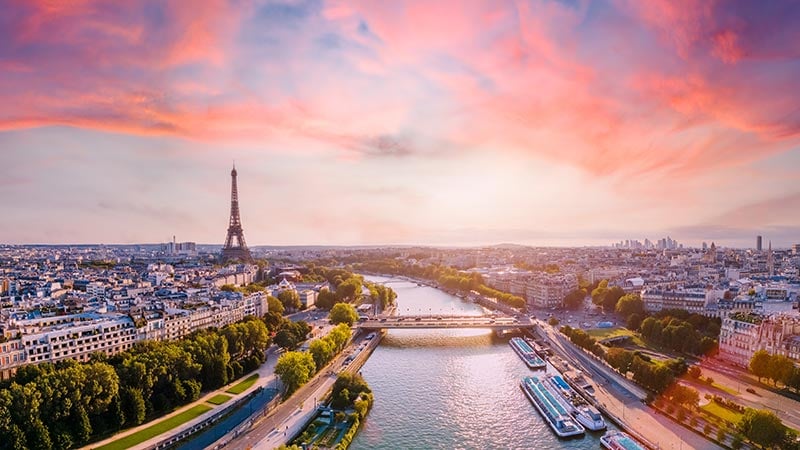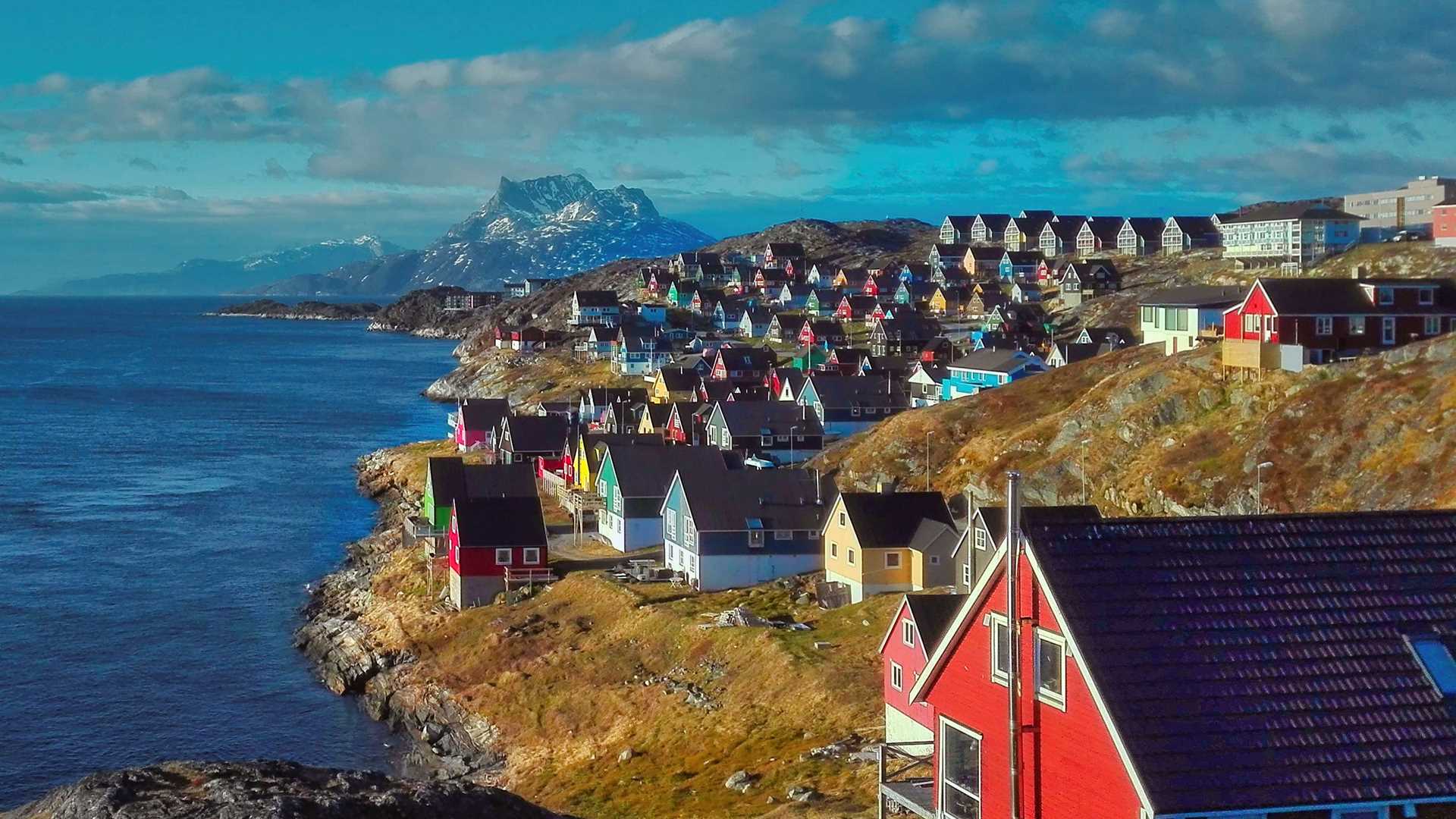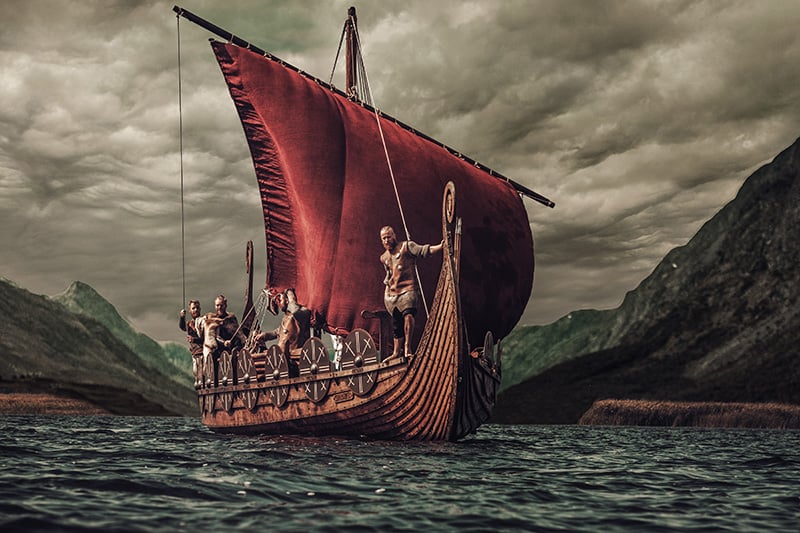Where The Vikings Really Ventured
When you think of the Vikings, you usually envision hell-raising warriors fleeing Scandinavian countries like Norway and Denmark to pillage neighbouring nations such as England, Scotland, and France. You probably don't image them riding camels to Baghdad, wearing silk in Istanbul, or camping in Canada. But, believe it or not, they did, along with a few more unexpected stops along the route. We look at the unexpected areas the Vikings went and the relics of their visits that may still be seen today.
Azores and Madeira, Portugal
We know that in AD 844, the Vikings invaded the Portuguese capital Lisbon, which was part of al-Andalus (Islamic Iberia), and many believe they made it to the Azores, a distant archipelago in the middle Atlantic. A breakthrough paper has suggested that the Vikings arrived in the Azores some 700 years before 15th-century Portuguese explorers landed on the seemingly desolate islands, leaving a genetic mark in the shape of mice, who may have taken a ride aboard the Vikings' fabled longboats.
‘Rome’, Italy
However, by AD 900, several Vikings had become French-speaking Christians as a result of intermarriage, religious conversion and integration with the native Franks. Normandy eventually ceased to be a Viking colony and became part of France, but the province retained the Vikings' ruthlessness, since the Normans frequently attacked and captured foreign territories. Rouen, a stunning Norman city, is shown here.
Paris, France

While the Vikings never entirely conquered Italy, Icelandic writer Snorri Sturluson's History of the Kings of Norway records that they loot the town of Luni (shown), mistaking it for Rome. In AD 860, Bjorn Ironside and another leader, Hastein, sailed their fleet to northern Italy, tricking Luni's residents into believing the party wanted to bury their Christian-converted chieftain (Hastein playing dead) behind the city's sacred walls. As soon as the Vikings entered the city, the killing and pillage began, but they quickly realized they were not in Rome after all and fled.
Istanbul, Turkey
The Varangian Guard guarded the city and acted as personal bodyguards for subsequent emperors. They fought in every major Byzantine campaign until the city was overrun by western Crusaders in AD 1204, and other historians claim that a select few remained Varangians until the empire crumbled in 1453. Two runic inscriptions (shown) can still be found etched into the marble parapet of Istanbul's most famous structure, the Hagia Sophia. Many people assume these were etched by members of the elite Varangian Guard.
Sicily, Italy
In the early eleventh century, the Normans (Viking descendants) began conquering and settling in Sicily. In 2018, five male corpses over 800 years old were discovered in a Sicilian cemetery. Their bones and build were noticeably larger than 'typical' Sicilians, and they are thought to be descendants of Roger de Hautville, a Norman lord who conquered Sicily from Arab armies. The Palatine Chapel (shown), the Zisa Palace, and Cefalu Cathedral all reflect Sicily's Norman influence.
Rif region, Morocco
While there are no Viking remains in Morocco, a number of tombs discovered in England could shed light on what happened to the captives they captured. A sub-Saharan African female's skeletal remains recovered in Gloucestershire in 2013 were carbon dated to AD 896-1025, while another individual of African descent was buried in Norfolk around AD 1000, at the height of the Viking age in Britain. It's impossible to say how they came up there, although some historians believe it was the product of a Viking-run slave trade from North Africa.
Iceland
Modern Icelanders derive over 70% of their genes from Norse ancestry, and there are numerous sites in Iceland with Viking history. A statue of Erik the Red (more on him later) stands outside the Hallgrimskirkja church in Reykjavik (shown), and the neighbouring Settlement Exhibition is built over the ruins of a Viking longhouse, one of Iceland's oldest man-made constructions. Explore further Viking activities, including an annual festival near Keflavik Airport and replica turf dwellings at Dalabyggð.
Greenland

Erik the Red, exiled in disgrace from Iceland due to murder, came in adjacent Greenland in AD 985 with 14 longships. Viking immigrants here erected manor buildings, ran farms, imported stained glass, and traded into the 1400s. They erected two outposts, one on the southwest coast and another about 240 miles north, and while Viking remnants may still be seen today, nothing is known about the Vikings who lived there. We don't know how much interaction they had with the Inuit, who moved to northwest Greenland from the Canadian Arctic around AD 1200.
Baghdad, Iraq
According to several texts, once the Vikings arrived in the Caspian Sea in western Asia in the ninth century, they went over 3,100 miles (5,000 kilometers) on camel caravans to Baghdad, potentially even Afghanistan and Kazakhstan. However, records describe these Vikings as merchants and laborers who traded with the affluent Abbasid Caliphate rather than raiding and pillaging.

